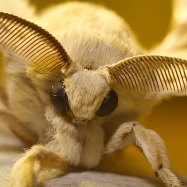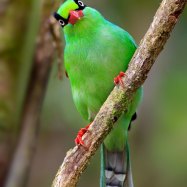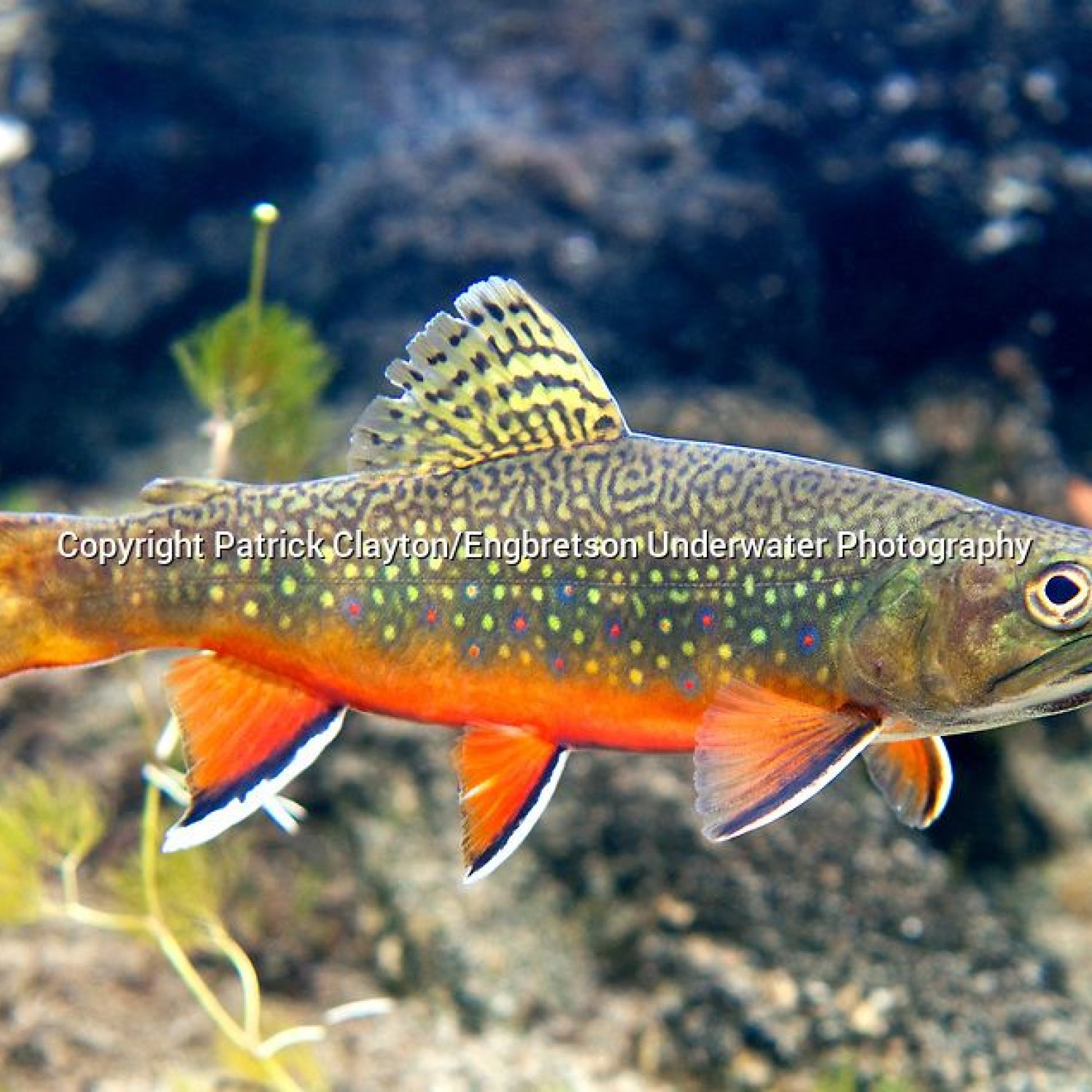
Brook Trout
6 to 20 inches
The Brook Trout, a member of the Salmonidae family, can reach lengths of 6 to 20 inches and has a slender and streamlined body shape. It can be found in the Eastern United States, Canada, and Europe. These beautiful fish are popular with anglers due to their striking coloration and challenging fight. Make sure to cast a line and try your luck catching these lively creatures in their natural habitat. #BrookTrout #Fishing #Salmonidae
Animal Details Summary:
Common Name: Brook Trout
Kingdom: Animalia
Habitat: Cold, clean, and well-oxygenated rivers, streams, lakes, and ponds
The Mighty Brook Trout: A Gem of the Cold Waters
When you think of freshwater fish, what comes to mind? Perhaps the ever-popular largemouth bass or the delicious rainbow trout? While these fish are undoubtedly impressive, there is one species that often goes overlooked – the brook trout. With its stunning coloration, impressive size, and fascinating biology, the brook trout is a true gem of the cold waters.Discovering the Brook Trout
The brook trout, scientifically known as Salvelinus fontinalis, is a species of fish in the Salmonidae family. Its common name, brook trout, comes from the fact that it is commonly found in brooks and streams Brook Trout. It is also known as the eastern brook trout, speckled trout, or brook charr.This fish has a wide geographical distribution, found primarily in North America and Europe. Its country of origin lies in both of these continents, with its range spanning from the eastern United States and Canada to parts of Europe.
Habitat and Feeding
The brook trout is a cold-water fish and requires clean, well-oxygenated water to thrive. As such, it is most commonly found in rivers, streams, lakes, and ponds in higher elevations. It favors cool, shaded areas with a rocky substrate and abundant aquatic vegetation.One unique aspect of the brook trout's habitat is its reliance on clean water. It is sensitive to any changes in water quality and is often used as a bioindicator of environmental health. Thus, the presence of brook trout in a water body is a good indication of the overall ecological health of that system Box Headed Blood Bee.
In terms of feed, the brook trout is a carnivorous fish, meaning it primarily preys on other animals. Its diet consists of a wide variety of organisms, including insects, crustaceans, small fish, and even other trout. Its feeding habits are heavily influenced by its surroundings, with brook trout in rivers relying more on insects and those in lakes preying on small fish.
Appearance and Adaptations
The brook trout is a stunning fish, with its coloration standing out amongst other freshwater species. Its body shape is slender and streamlined, enabling it to move effortlessly through the water. The average length of a brook trout is between 6 to 20 inches, with some specimens reaching up to 30 inches.One of the most distinctive features of the brook trout is its coloration. On the back, it is olive green to dark brown, with lighter sides and a yellowish belly. Its back and sides are adorned with red spots, each with a blue halo. These spots are used as camouflage, blending in with the surroundings to hide from predators.
Another unique feature of the brook trout is its red fins, with white leading edges. These bright colors serve as a warning signal to predators, indicating that the fish is toxic due to its diet of aquatic insects known as caddisflies. These insects contain a toxic substance called thiaminase, which can be fatal to animals that consume them in large quantities.
Additionally, the brook trout has a specialized organ called the lateral line, which helps it detect changes in water pressure, movements, and vibrations. This adaptation is essential for the fish to thrive in its environment, allowing it to sense prey, navigate its surroundings, and avoid predators.
Brook Trout in Culture and Conservation
The brook trout holds a special place in North American and European culture. It is a popular game fish, sought after by anglers for its size and beauty. In some areas, it is also considered a symbol of clean and healthy water systems, and its presence is often linked to the well-being of the ecosystem.Unfortunately, due to habitat destruction, pollution, and overfishing, brook trout populations have declined in some areas. To combat this, various conservation efforts are in place to protect and restore their habitats. These include improving water quality, controlling fishing limits and methods, and implementing fish stocking programs in areas where populations have declined.
A unique conservation effort for the brook trout can be seen in the Great Smoky Mountains National Park, where native Southern Appalachian brook trout populations are being restored. Through efforts such as removing non-native fish species and restoring damaged stream habitats, this iconic fish species is making a comeback in its native range.
The Brook Trout's Legacy
The brook trout may not be as famous as its freshwater counterparts, but it is undoubtedly a fantastic species in its own right. With its stunning coloration, fascinating adaptations, and important role in the ecosystem, the brook trout is a testament to the beauty and resilience of nature.So next time you're near a cold, clean, and well-oxygenated water source, keep an eye out for this magnificent fish. And if you're lucky enough to spot one, take a moment to appreciate the beauty and wonder of the mighty brook trout.

Brook Trout
Animal Details Brook Trout - Scientific Name: Salvelinus fontinalis
- Category: Animals B
- Scientific Name: Salvelinus fontinalis
- Common Name: Brook Trout
- Kingdom: Animalia
- Phylum: Chordata
- Class: Actinopterygii
- Order: Salmoniformes
- Family: Salmonidae
- Habitat: Cold, clean, and well-oxygenated rivers, streams, lakes, and ponds
- Feeding Method: Carnivorous
- Geographical Distribution: North America and Europe
- Country of Origin: North America and Europe
- Location: Eastern United States, Canada, and Europe
- Animal Coloration: Olive green to dark brown on the back with lighter sides and a yellowish belly. It has red spots with blue halos on the back and sides, and its fins are red with white leading edges.
- Body Shape: Slender and streamlined
- Length: 6 to 20 inches
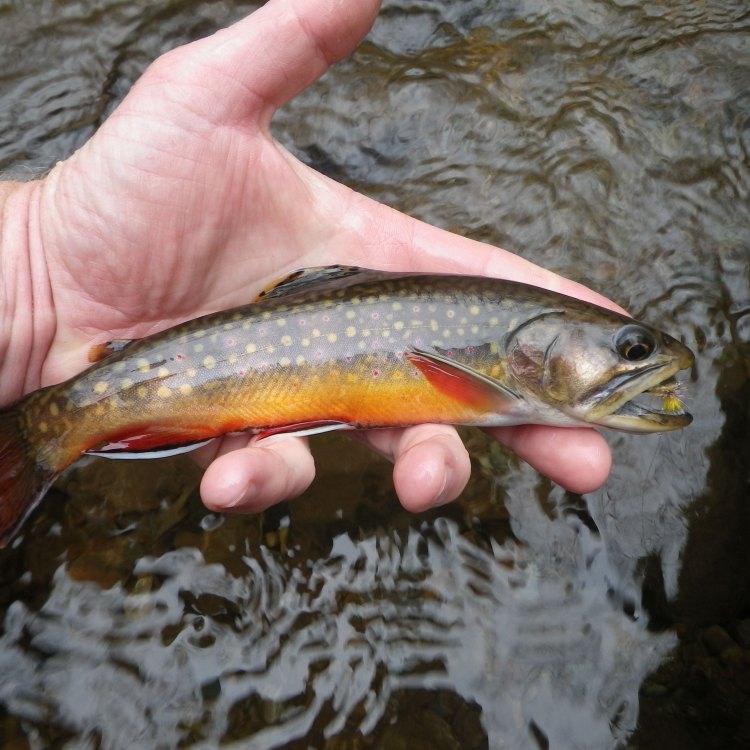
Brook Trout
- Adult Size: Max. length of 24 inches and weight of 6.6 pounds
- Average Lifespan: 4 to 7 years
- Reproduction: Sexual
- Reproductive Behavior: Spawning occurs in the fall or early winter, where females lay their eggs in gravel nests called redds. Males then fertilize the eggs externally.
- Sound or Call: Does not produce sound
- Migration Pattern: Some populations may migrate to cooler waters during the summer.
- Social Groups: Solitary
- Behavior: Brook Trout are known for their aggressive feeding behavior, often striking at small fish, insects, and other invertebrates.
- Threats: Habitat degradation, pollution, overfishing, competition with non-native fish species
- Conservation Status: Least Concern
- Impact on Ecosystem: As a native species, Brook Trout play an important role in their ecosystems as both predator and prey.
- Human Use: Angling (fishing) for sport, food, and conservation purposes
- Distinctive Features: Distinctive red spots with blue halos, red fins with white leading edges
- Interesting Facts: 1. Brook Trout are highly adaptable and can survive in a wide range of water conditions. 2. They are the state fish of nine U.S. states. 3. Brook Trout are sensitive to changes in water temperature and are considered an indicator species for water quality. 4. Unlike most other trout species, Brook Trout are not actually trout but belong to the char genus. 5. They are known for their beautiful and vibrant coloration.
- Predator: Birds of prey, larger fish species, and mammals
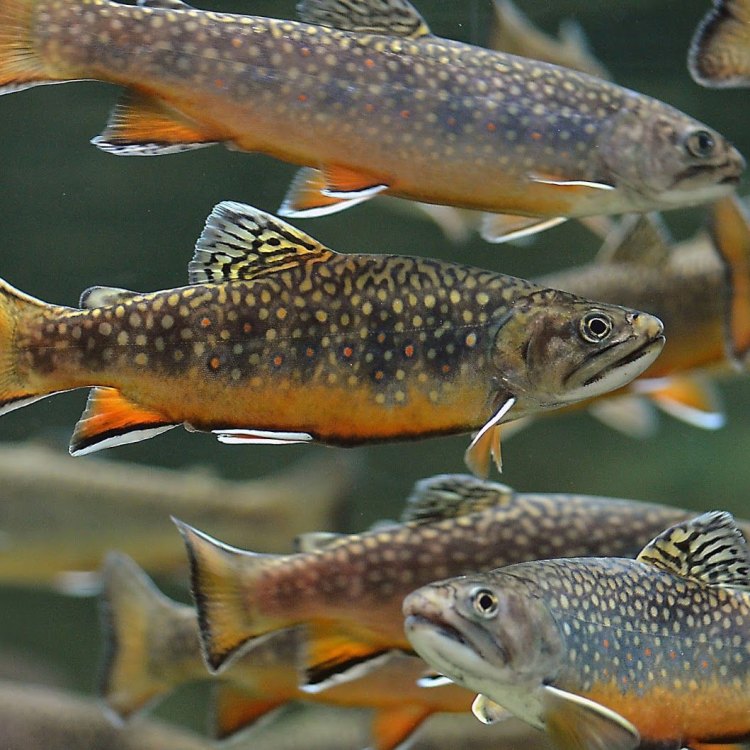
Salvelinus fontinalis
The Beyond Ordinary Brook Trout: A Fish of Many Colors
When one thinks of trout, the image of a sleek, silvery fish swimming upstream in a pristine mountain river often comes to mind. But what if we told you that there is a trout species that stands out from the traditional trout stereotype? Meet the Brook Trout (Salvelinus fontinalis), a distinctive and fascinating fish that inhabits the cool, clear waters of North America.From its unique appearance to its crucial role in the ecosystem, the Brook Trout has many interesting features that make it stand out among its aquatic counterparts. So, let's dive in and explore the world of the Beyond Ordinary Brook Trout PeaceOfAnimals.Com.
Appearance and Characteristics
First and foremost, let's talk about the appearance of Brook Trout. Unlike the silver skin of other trout species, the Brook Trout stands out with its distinctive red spots surrounded by a blue halo. The color of its body can range from olive green to dark brown with a white belly, making it a stunning sight to behold. However, the most defining feature of the Brook Trout is its vibrant red fins with white leading edges, which are thought to attract potential mates.Apart from its striking appearance, the Brook Trout also possesses a few unique characteristics. As adults, they can reach a maximum length of 24 inches and a weight of 6.6 pounds, with an average lifespan of 4 to 7 years. However, some individuals have been known to live up to 10 years. While they may not be the biggest or longest-lived fish out there, the Brook Trout compensates with its adaptability to a wide range of water conditions Boston Terrier. From small mountain streams to large lakes and rivers, the Brook Trout can thrive in various aquatic environments.
Behavior and Reproduction
Now, let's take a look at how the Beyond Ordinary Brook Trout behaves in its natural habitat. As solitary creatures, Brook Trout are often seen swimming alone or holding their own territory in streams or pools. However, during the breeding season, they exhibit brief social behaviors when courting and spawning with potential mates.Talking about reproduction, Brook Trout are sexual creatures, meaning they require both male and female individuals for successful breeding. Spawning occurs in the fall or early winter, where females dig a shallow nest in the gravel bed of the stream known as a redd. Females can lay anywhere from 200 to 4,000 eggs, depending on their size and age. Males then fertilize the eggs externally, and the females cover them with gravel to protect them from predators.
Interestingly enough, Brook Trout do not produce any sound or call to attract mates. Instead, they rely on their bright colors and behavior to signal their readiness for breeding.
Habitat and Migration
The Beyond Ordinary Brook Trout is found primarily in cold, clear, and well-oxygenated water systems throughout North America. Its native range includes eastern Canada and the northeastern United States, but it has been introduced to various other states as well.During the summer months, some populations of Brook Trout may migrate to cooler waters to escape the heat. This movement not only helps them regulate their body temperature but also allows them to access new food sources.
Impact on Ecosystem and Threats
As a native species, the Brook Trout plays a critical role in its ecosystem as both predator and prey. As predators, they control the population of smaller fish and invertebrates, thus maintaining the balance in the food web. As prey, they provide a vital food source for larger fish, birds of prey, and mammals.However, the Brook Trout faces several threats that impact its survival. Habitat degradation, pollution, and overfishing are some of the primary threats to its population. Additionally, the introduction of non-native fish species, such as the Brown Trout and Rainbow Trout, has resulted in competition for resources, leading to a decline in the Brook Trout population in some areas. But, not to worry, the International Union for Conservation of Nature (IUCN) currently lists the Brook Trout as a species of Least Concern, indicating that its population is currently stable.
Human Use and Conservation Efforts
One of the most significant human uses of the Brook Trout is as a target for angling (fishing) for sport, food, and conservation purposes. As a highly sought-after game fish, it has been stocked in many areas for recreational fishing, providing a source of income for many local communities. However, it is essential to follow sustainable fishing practices to ensure the conservation of this species for future generations.Speaking of conservation, there have been various efforts to preserve and protect the Beyond Ordinary Brook Trout. From habitat restoration to regulations on fishing, numerous organizations and agencies are dedicated to conserving this species. Additionally, many fish hatcheries have been established to breed and release young Brook Trout into the wild, helping to maintain their population.
Fun Facts
Now, let's wrap up our exploration of the Beyond Ordinary Brook Trout with some fascinating and lesser-known facts about this unique fish:- The Brook Trout is not actually a trout but belongs to the char genus, making it more closely related to the Arctic char and Dolly Varden.
- The Brook Trout is the state fish of nine U.S. states, including Michigan, Vermont, and New Hampshire.
- They are highly sensitive to changes in water temperature and are considered an indicator species for water quality.
- The oldest recorded Brook Trout was caught in 2007 in Ontario, Canada, and was found to be 15 years old.
In Conclusion
In conclusion, the Brook Trout may seem like an ordinary fish at first glance, but it is far from that. From its unique appearance and behavior to its vital role in the ecosystem, this species stands out among other trout species. So, the next time you see a red-spotted fish swimming in a clear mountain stream, remember that it's not just an ordinary trout; it's the Beyond Ordinary Brook Trout.
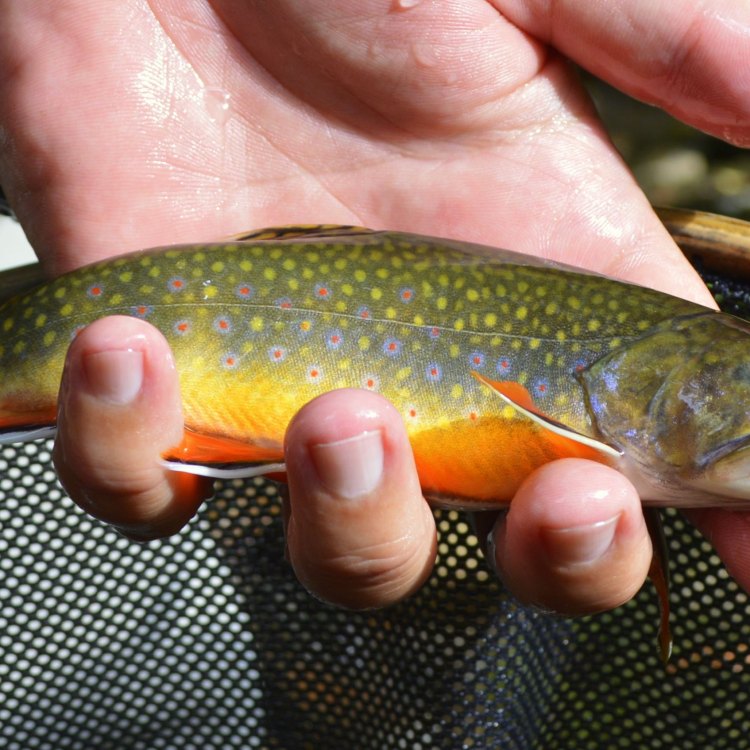
The Mighty Brook Trout: A Gem of the Cold Waters
Disclaimer: The content provided is for informational purposes only. We cannot guarantee the accuracy of the information on this page 100%. All information provided here may change without prior notice.




